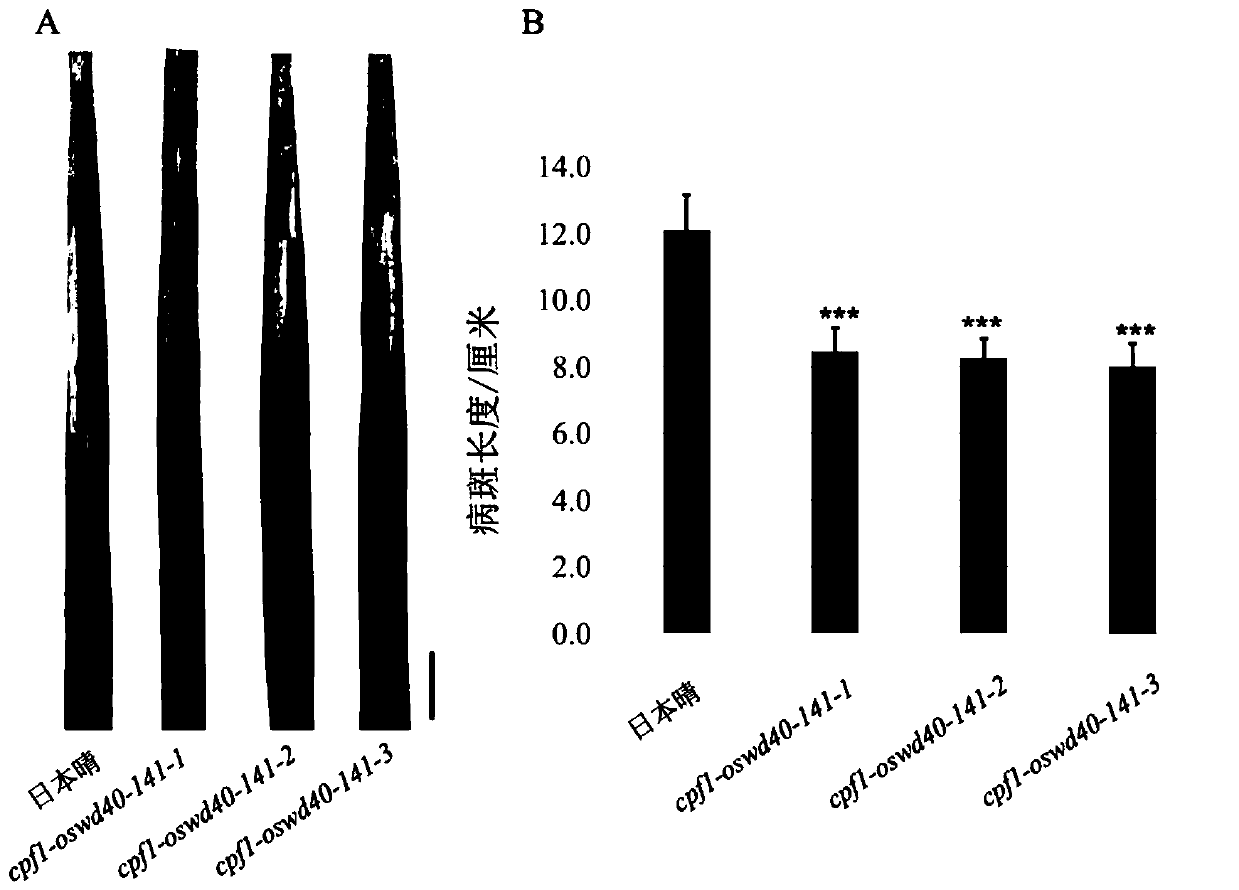Rice WD40-rich repeat protein OsWD40-141 and coding gene and application thereof
A gene and protein technology, applied in the biological field, can solve the problems of easy mutation, narrow resistance spectrum, difficult to use and so on
- Summary
- Abstract
- Description
- Claims
- Application Information
AI Technical Summary
Problems solved by technology
Method used
Image
Examples
Embodiment 1
[0079] Example 1. Method for targeted knockout of rice WD40-rich repeat protein gene OsWD40-141 based on Lb-CRISPR / Cpf1 system
[0080] 1. Sequence and analysis of rice WD40-rich repeat protein gene OsWD40-141
[0081] The sequence of the rice WD40-rich repeat protein gene OsWD40-141 is shown in SEQ ID No.2. Sequence analysis shows that the gene includes 14 exons, which are respectively the 144th-204th positions of the SEQ ID No.2 sequence ( First exon), 2093-2238 (second exon), 2313-2659 (third exon), 4910-5022 (fourth exon), 5092-5138 bit (fifth exon), 6715-6865 (sixth exon), 7015-7078 (seventh exon), 7255-7413 (eighth exon), 7527 -7648 (ninth exon), 8570-8644 (tenth exon), 14371-14424 (eleventh exon), 14505-14578 (twelfth exon) ), 15650-15724 (13th exon), 15885-16104 (14th exon).
[0082] In the present invention, the sequence on the promoter of the rice WD40-rich repeat protein gene OsWD40-141 is used as the OsWD40-141-T1 target sequence of the rice WD40-rich repeat pro...
Embodiment 2
[0094] Example 2. Application of targeted knockout method in rice varieties based on Lb-CRISPR / Cpf1 technology
[0095] The recombinant Agrobacterium EH105-Lb-OsWD40-141-1 was used to infect the callus induced by mature embryos of rice variety Nipponbare, and the obtained rice transformed plants were named NIP-Lb-OsWD40-141-1 respectively.
[0096] The specific method is as follows:
[0097] 1. Inoculate the recombinant Agrobacterium EH105-Lb-OsWD40-141-1 in YEB liquid medium (containing 50 μg / ml kanamycin and 20 μg / ml rifampicin), and culture it with shaking at 28°C and 200 rpm to OD600 0.6-0.8; centrifuge at 5000rpm, 4°C for 5min, resuspend the bacterial cell sediment concentration in AAM liquid medium (acetosyringone concentration is 200μM / L, pH 5.2) until the OD600 is 0.6-0.8, and obtain recombinant Agrobacterium resuspension liquid.
[0098] 2. Remove chaff from mature seeds of rice variety Nipponbare, soak in 75% ethanol for 1 min, then sterilize in NaClO solution (mix...
PUM
 Login to View More
Login to View More Abstract
Description
Claims
Application Information
 Login to View More
Login to View More - R&D
- Intellectual Property
- Life Sciences
- Materials
- Tech Scout
- Unparalleled Data Quality
- Higher Quality Content
- 60% Fewer Hallucinations
Browse by: Latest US Patents, China's latest patents, Technical Efficacy Thesaurus, Application Domain, Technology Topic, Popular Technical Reports.
© 2025 PatSnap. All rights reserved.Legal|Privacy policy|Modern Slavery Act Transparency Statement|Sitemap|About US| Contact US: help@patsnap.com



